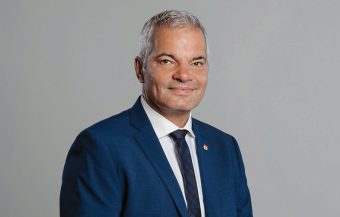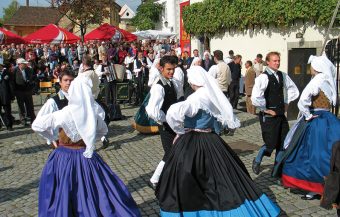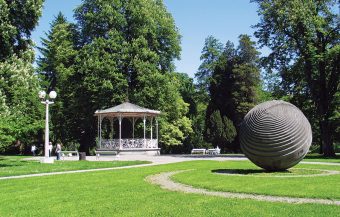
Back in the day, Maribor was one of the most developed cities in Yugoslavia. Today, it is the second largest city in Slovenia and the first in the region to apply the circular economy principles. Following the adoption of the Strategy for Maribor’s transition to a circular economy and the Action Plan that accompanies the Strategy, this idyllic tourist town defined the key development projects regarding the transition to the circular economy. Maribor also participates in the EU Pilot project for the bio-circular economy region of Podravje and is preparing an action plan and projects to be implemented by year-end. In an interview for Energy Portal Magazine, Maribor’s mayor, Aleksander Saša Arsenovič, discusses modern technologies, energy efficiency, climate change, sustainable development, and other current topics.
Q: What modern technological solutions do you use for the treatment of mixed municipal waste? Did waste incinerators in Maribor become operational?
A: The Snaga public company, which operates under the Maribor Public Holding Group (JHMB), provides municipal waste management services. Mixed municipal waste is collected door-to-door. The exception is the collection of waste in the town centre, where there are four underground collection points for mixed municipal and other types of separately collected waste. Struja sorts the collected mixed municipal waste into different fractions in a modern, well-equipped, organized sorting plant. Out of 75,000 tons of municipal waste collected annually, 32 per cent is collected at the source as mixed municipal waste, and 68 per cent is collected separately, all of which goes to purchasers for further processing and recycling. A waste incinerator has not yet been installed in Maribor. We are currently in the process of finding a location for the incinerator while also preparing amendments to the waste incineration regulation.
Q: Are you developing the public-private partnership concept for implementing innovations? How many investments do such environmental protection projects attract?

A: Energy renovation projects of public buildings are implemented in line with the public-private partnership model. In 2019, the Maribor municipal authorities fully renovated 14 and partially renovated 10 public buildings under a public-private partnership based on the energy contracting model. The municipality received cohesion grants for the comprehensive renovation. Thus, in 2019, the municipal authorities carried out the largest energy renovation in the region, with 24 public buildings (schools, kindergartens, sports halls) being renovated.
The project value was 12 million euros. Annual energy consumption was reduced by 5,952 MWh, energy costs by 446,000 euros, maintenance costs by 28,500 euros and CO2 emissions by 1,305 tons. Working and living conditions have improved significantly, and the users are delighted. The project is regularly monitored, and savings are verified by the Energy and Climate Agency of Podravje – ENERGAP, which also participated in preparing the relevant documentation, obtaining cohesion funds and monitoring the investment implementation.
IN FOCUS:
- GREEN PROJECTS OF SERBIAN SCIENTISTS – BIOPESTICIDES FOR PROTECTION OF TREES FROM DEADLY PESTS
- MT-KOMEX BUILT THE FIRST POWER PLANT IN THE EUROPEAN UNION
- CARBON FARMS MAKE AGRICULTURE MORE SUSTAINABLE
Q: How much have you done to improve household energy efficiency so far?

A: Together with the municipal authorities, ENERGAP offers citizens energy consultations throughout the year. While providing these consulting services, ENERGAP actively cooperates with energy consultants who work with the ENSVET national network (network of energy consulting offices). At an ENSVET office, people receive free advice and information on investments in energy efficiency and renewable energy sources. They may also be able to obtain non-refundable financial incentives and favorable loans. All the necessary information and notifications about free energy consultations are available on the ENERGAP website and social networks. From time to time, they publish tips on saving electricity and heat, information on the carbon footprint and how to reduce it, tenders for grants, tips on cooling rooms in the summer months, and tips on staying safe in the sun. Various online lectures and seminars for citizens are also organized on the topics of savings, heating, self-sustainability, energy renovation, construction, investments in renewable energy sources, etc. ENERGAP also has an advisory office on its premises to promote using renewable energy sources, which is intended for all interested citizens, municipalities, and companies.
Q: What do you do to improve air quality, increase the use of renewable energy sources and work to develop mobility?
A: Air pollution in Maribor has been decreasing year-on-year. The largest pollution, especially during the heating season, comes from using very old and inefficient appliances. The values of pollutants, especially PM10 particles, have dropped significantly in the last six years. In 2018, at the Krekovo/Tirševa measuring point, there were as many as 21 days where the daily pollution limit was exceeded, and in 2023, not a single such day was recorded at the same measuring point. All reports with ambient air quality and condition monitoring at all measuring points are publicly available on the environmental website and a unique Interactive Map. Regarding renewable energy sources, we plan to install eight solar power plants (total power of 1 MW) that will create a local, energy-independent community. We are also planning new solar power plants on 14 public buildings with a power of 2 MW. Additional power plants are scheduled for the closed Porežje and Dogoše landfills, and discussions are ongoing for constructing a 5MW solar power plant at the railway trisection.
Interview by Mirjana Vujadinović Tomevski
Read the whole interview in the new issue of the Energy portal Magazine AGROSOLAR ENERGY AND RES.

